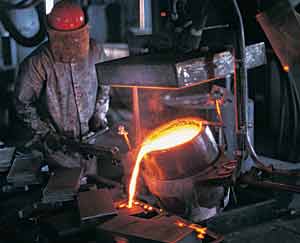Selecting High-End Hardware for Residential, Commercial, and Hospitality Locations
More natural and organic products, like wood and stone, are being incorporated as major design elements into residential, commercial, and hospitality projects. Hardware, in turn, needs to reflect the natural properties of these materials. This design sympathy with natural products has trended hardware away from manufactured, finished appearances toward living finishes like bronze and patinas, which change naturally over time.
"Designers have embraced newer hybrid styles, such as ‘mountain modern' and ‘coastal contemporary'," notes Patsy Nickum, owner of Rocky Mountain Hardware. These styles combine the clean lines of modern design while integrating the warmth and character of organic materials and colors such as stone, wood, and structural steel. All are materials used in a raw state, were frequently covered with more finished materials, and now they are exposed and aged with time. Designers have begun to reflect the living and changing aspects of materials in their designs.
Increasingly, security hardware and devices are being adapted to many different applications. This high technology trend, combining traditional latch and lock mechanisms with IT systems, represents a design and coordination challenge for both architects and manufacturers.
Basic Issues Guiding Hardware Design and Selection Choices
Typically, the driving force behind selecting different hardware is based on the necessary function, and the basic distinction is between indoor and outdoor applications. Most exterior doors lock, and in many cases the doors are larger in scale (taller, wider, heavier, and carry more hardware) than interior doors. This is especially true of entry doors. In order to hold larger and sturdier locking mechanisms, such as a mortise lock, selecting doors with larger stiles, which provide more room for the trim, is fundamental to having more options in hardware selection. The mortise lock, which integrates the locking and latching mechanisms into a single cartridge style lock, is inset within the width of the door and is set within the stile, the vertical structural member of the door.
Many interior doors contain a locking mechanism, but these tend to be smaller than those that secure homes. This varies based on residential and commercial applications. Another broad assumption is that interior doors are not required to meet all of the stringent impact codes, especially relating to hurricanes and high wind conditions that exterior doors are often subject to. This also varies with application, particularly for interior doors in commercial and hospitality settings.
Intensity of Use
High-traffic areas demand lock mechanisms with high tolerance for use. If doors require locking mechanisms, mortise locks are generally recommended. Fewer working parts will assure better operation if it fits the need. For example, in a busy location, a push/pull device, instead of a lever or knob lockset, is preferable. This is typical for doors that do not require latches.
Low-use doors can employ many different mechanisms because the function will not be tested as much as on high use doors. Nevertheless, design professionals should determine the potential use and regulations of the door before specifying hardware. Available options depend on whether the door will be used primarily for security or passage.
Basic Materials
The most common metals used in hardware trim are brass, stainless steel, aluminum, and bronze. Selecting the proper hardware material for a project depends on aesthetics, durability, and availability in all necessary lock functions and sizes for the project.
|
Brass, which is most commonly drop or hot forged, has been popular for many years. This metal begins in a rod form, is heated until it is malleable, and is then pressed with extreme pressure into a mold. This technique forges a product free of blemishes or pockmarks. Brass is often highly polished and then lacquered as a protective coat. Sometimes manufactures plate brass to look like other finishes such as nichel then lacquer coat again for protection. These lacquered finishes, like anything that is touched and used on a regular basis, can crack, chip or peel, thus allowing the base metal to tarnish with time.
Forging tends to result in more highly finished, polished, blemish-free surfaces. Reverting to casting techniques yields finer detail products with a warm texture. Many products can be poured using the sand casting process but the lost wax process can be used to make products that have finer details, while still retaining the desired texture of casting.










